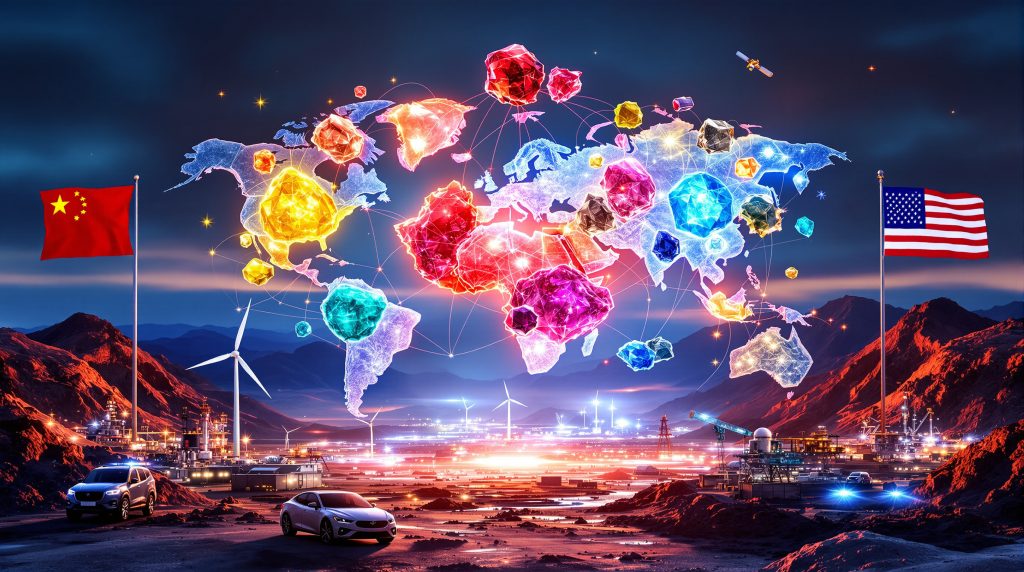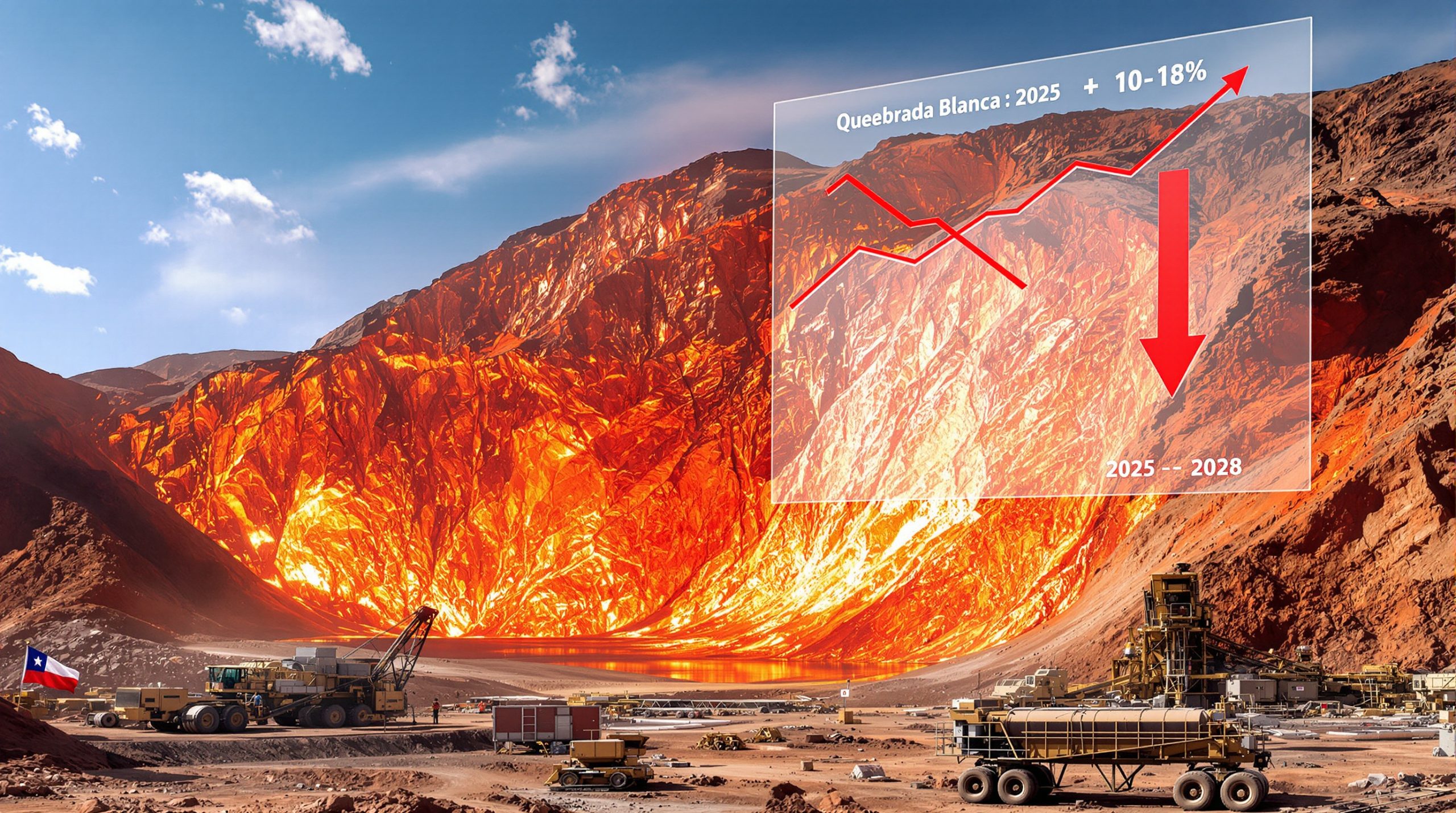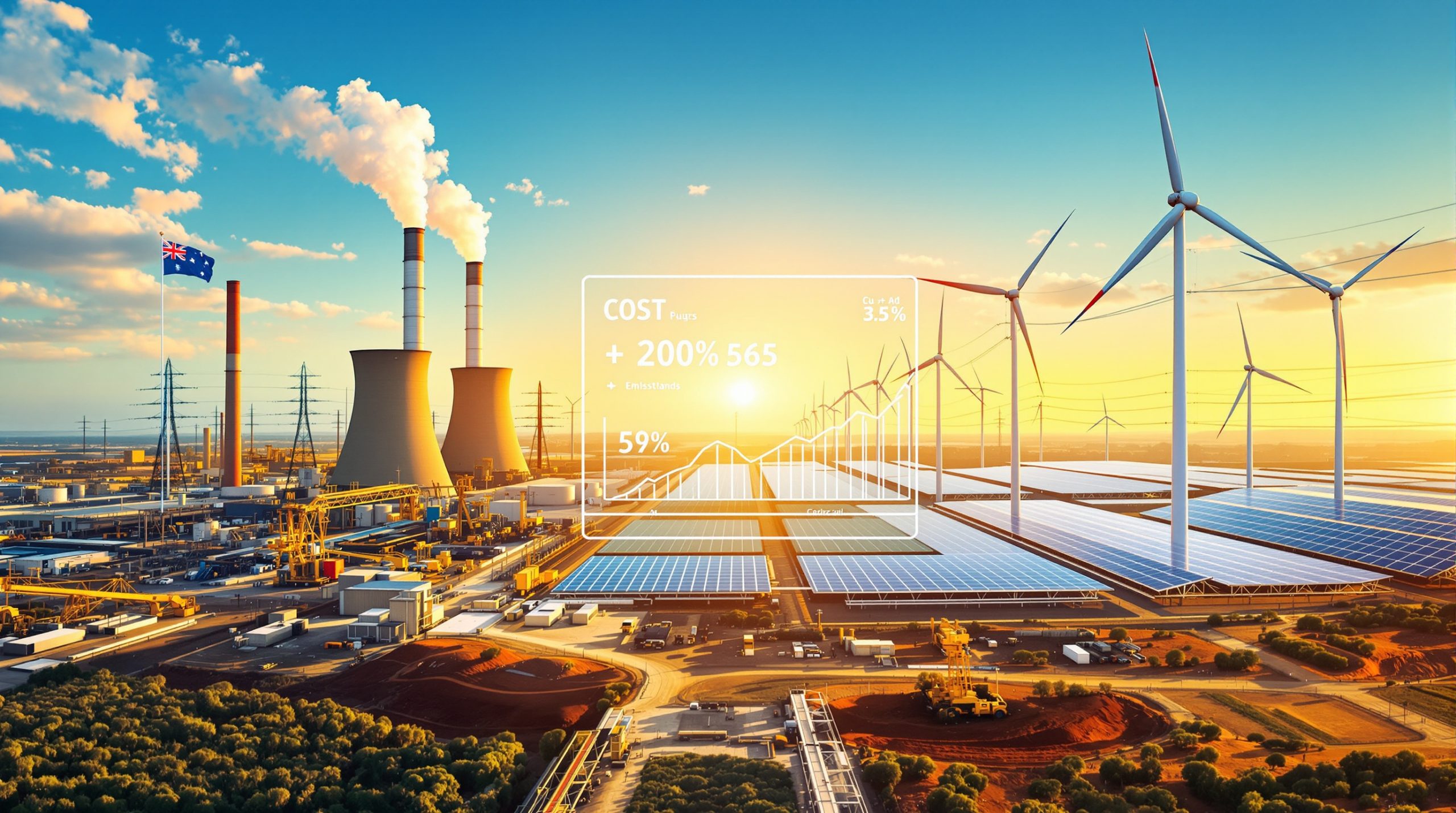China's Rare Earth Export Restrictions: Global Supply Chain Impacts
How Are China's New Rare Earth Export Controls Reshaping Global Markets?
China has implemented significant export controls on rare earth elements, triggering substantial disruptions across international supply chains. These restrictions target materials essential for advanced manufacturing, renewable energy technologies, and defense applications. The strategic policy shift represents China's evolving approach to resource management, with far-reaching consequences for global industries.
The restrictions come amid growing rare earth reserves analysis showing their strategic importance in high-tech manufacturing and green energy transitions. China's control over these supply chains gives it considerable economic and geopolitical leverage.
The Strategic Minerals at the Center of Trade Tensions
Seven critical rare earths under restriction:
- Samarium – used in precision-guided weapons and radiation treatments
- Gadolinium – essential for MRI contrast agents and neutron radiography
- Terbium – crucial for solid-state devices and sonar systems
- Dysprosium – vital for increasing heat resistance in permanent magnets
- Lutetium – applied in petroleum refining catalysts and PET scan detectors
- Scandium – utilized in aerospace components and solid oxide fuel cells
- Yttrium – important for LED phosphors and strengthening metal alloys
These elements find primary applications in high-performance magnets, batteries, screens, and defense technologies. The implementation mechanism involves monthly export quotas and mandatory licensing through the Chinese Ministry of Commerce.
China's Dominant Market Position
China maintains an overwhelming presence across the rare earth supply chain:
| Aspect of Rare Earth Supply Chain | China's Global Share |
|---|---|
| Mining Production | ~60% |
| Processing Capacity | ~85% |
| Magnet Manufacturing | ~90% |
| Heavy Rare Earth Refining | Near-monopoly |
This dominance stems from decades of strategic investment and environmental regulatory advantages. Chinese companies benefited from lower environmental compliance costs while Western producers struggled with stricter regulations.
What Triggered China's Export Control Strategy?
Geopolitical Leverage in Trade Relations
China's rare earth export controls appear strategically timed amid escalating global trade tensions. The policy shift leverages China's dominance in critical minerals & energy transition as a powerful negotiating tool in broader economic discussions.
The move follows historical precedent—China previously restricted rare earth exports to Japan in 2010 during territorial disputes, causing prices to spike by as much as 500% for certain elements.
Official Justifications vs. Market Perspectives
China's stated rationale centers on national security protection and fulfillment of international non-proliferation commitments. Officials have also cited environmental concerns and the need to conserve strategic resources.
Market observers, however, interpret the restrictions as a strategic response to Western technology restrictions and tariffs. The policy evolved with initial restrictions followed by more targeted bans on refined products.
What's particularly concerning to Western manufacturers is the focus on higher-value processed materials rather than just raw ores. This targets the most vulnerable point in supply chains—the specialized processing that's difficult to replicate outside China.
How Are Global Industries Responding to Supply Disruptions?
Immediate Market Reactions
The restrictions have triggered significant price volatility for affected rare earth elements. Spot market prices for dysprosium and terbium experienced double-digit percentage increases within weeks of the announcement.
For manufacturers globally, this volatility has complicated procurement planning. Many companies have activated contingency plans developed after previous supply disruptions, including seeking alternative suppliers and considering materials substitution.
Industry-Specific Impacts
Electric Vehicle Manufacturing
EV producers face particular vulnerability due to their dependence on rare earth permanent magnets for motor efficiency. A typical EV can contain 1-2 kg of neodymium and smaller amounts of dysprosium, terbium, and praseodymium in its motors.
Companies are exploring alternative motor designs, though these often involve performance trade-offs:
- Induction motors (used in some Tesla models) avoid rare earths but have lower power density
- Switched reluctance motors offer another alternative but present noise and control challenges
- Reduced-dysprosium magnets sacrifice some high-temperature performance
Renewable Energy Sector
Wind turbine manufacturers rely heavily on rare earth magnets for direct-drive generators. A single large offshore wind turbine can contain up to 600 kg of rare earth elements.
The restrictions threaten to slow deployment timelines for offshore wind projects where direct-drive generators are particularly valuable due to their reliability and reduced maintenance requirements.
Defense Applications
Military contractors face heightened concerns about component availability for precision-guided systems, radar technologies, and communications equipment that rely on rare earth elements.
Defense systems typically require higher-grade materials with stricter performance specifications, making substitution particularly challenging. Many nations' defense departments have consequently accelerated stockpiling programs.
Which Alternative Supply Chains Are Emerging?
Non-Chinese Mining Operations Gaining Prominence
Several countries are ramping up rare earth production capabilities:
- Australia: Expanding operations at Mount Weld (Lynas Rare Earths), containing significant deposits of light rare earths
- United States: Accelerating development at Mountain Pass mine in California, focusing on bastnaesite ore rich in cerium, lanthanum, and neodymium
- Brazil and Vietnam: Expanding exploration activities, with Vietnam focusing on ion-adsorption clay deposits similar to those in southern China
These operations focus primarily on light rare earths, while heavy rare earths (including dysprosium and terbium) remain more challenging to source outside China.
Processing Capacity Development Outside China
Processing presents a more significant bottleneck than mining:
- Malaysia: Expanding separation facilities for light rare earths, though facing environmental scrutiny
- Estonia: Enhancing capabilities for processing heavy rare earths at Silmet facility
- United States: Fast-tracking permits for processing facilities in Texas and Wyoming, including MP Materials' initiative to develop full vertical integration
The technical complexity of rare earth processing presents significant challenges. Separation facilities require specialized expertise, chemical processes, and waste management systems that take years to develop.
What Are the Long-Term Strategic Responses?
Supply Chain Resilience Initiatives
Companies and governments are implementing multi-faceted approaches:
- Stockpiling programs: Strategic reserves being established in the US, EU, Japan, and South Korea
- Material substitution research: Funding for alternatives to rare earth magnets, including iron-nitride magnets and cerium-cobalt composites
- Recycling innovation: Advanced extraction technologies for recovering rare earths from end-of-life products, including hydrogen decrepitation and ionic liquid extraction
The Defense Advanced Research Projects Agency (DARPA) and similar organizations in other countries have intensified funding for alternative magnet technologies that reduce or eliminate rare earth dependency.
International Cooperation Frameworks
Multilateral initiatives are gaining momentum:
- US-EU Critical Minerals Partnership: Coordinated investment in alternative supply chains and technology sharing
- Quad Critical Minerals Initiative: Australia, India, Japan, and US collaboration on resource development and processing technology
- OECD Supply Chain Guidelines: New frameworks for transparency and sustainability in mineral sourcing
These partnerships aim to pool technical resources and distribute investment risk across multiple countries, recognizing that no single nation outside China can replicate the complete rare earth value chain independently.
What Does This Mean for Tesla and Other EV Manufacturers?
Tesla's Vulnerability and Adaptation Strategy
Tesla faces exposure to rare earth supply constraints but has developed a diversified motor strategy:
- Supply diversification: Securing contracts with non-Chinese suppliers, particularly for neodymium
- Motor design evolution: Using both permanent magnet motors and induction motors across its vehicle lineup
- Vertical integration: Investigating potential investment in processing capacity to secure supply chains
Tesla's Model 3 and Y use permanent magnet motors for their efficiency advantages, while some variants of the Model S and X employ induction motors that avoid rare earth use entirely.
Competitive Positioning Among EV Manufacturers
Different automakers face varying levels of exposure:
- Companies with alternative motor designs may gain temporary competitive advantages, though at the cost of some efficiency
- Japanese manufacturers with established supply relationships outside China appear better positioned to weather disruptions
- Chinese EV makers maintain preferential access to domestic rare earth supplies, potentially strengthening their export position
The restrictions could accelerate industry consolidation, as smaller manufacturers struggle to secure supplies without the purchasing power of larger companies.
How Are US-China Trade Negotiations Addressing Rare Earth Tensions?
Diplomatic Developments
Bilateral discussions have yielded limited progress:
- A framework agreement led to temporary easing of some restrictions
- Ongoing negotiations focus on establishing stable supply channels for critical industries
- Export license delays continue despite formal agreements, creating uncertainty for Western manufacturers
The negotiations highlight the challenge of balancing interdependent supply chains with growing strategic competition. Both sides recognize the economic costs of disruption but maintain competing security priorities.
Policy Responses in Western Nations
Western countries are implementing various policy measures:
- Critical Minerals Security Act: US legislation providing tax incentives for domestic rare earth production and processing
- European Critical Raw Materials Act: EU framework for securing sustainable supply chains and reducing import dependency
- International partnerships: Coordinated efforts to develop alternative sources and processing capacity
These initiatives typically combine direct subsidies, tax incentives, and regulatory streamlining to accelerate private sector investment in alternative supply chains.
What Are the Practical Implications for Global Manufacturing?
Supply Chain Transformation Challenges
Companies face significant hurdles in reducing dependence on Chinese rare earths:
- Timeline misalignment: Alternative mines require 5-10 years to reach full production
- Processing bottlenecks: Limited capacity outside China for separation and refining
- Technical expertise gaps: Concentrated knowledge base in Chinese operations
Many companies report difficulties recruiting specialists with experience in rare earth processing, as much of the expertise has developed within Chinese facilities over the past two decades.
Cost Structure Impacts
The restrictions are reshaping cost structures across high-tech manufacturing:
- Price premium for non-Chinese sources: 15-30% higher costs for materials from alternative suppliers
- Inventory carrying costs: Increased expenses from strategic stockpiling
- R&D investment: Additional spending on material substitution and design alternatives
These increased costs are challenging to pass on to consumers in competitive markets, potentially squeezing profit margins for affected manufacturers.
FAQ: China's Rare Earth Export Controls
Are China's export restrictions a complete ban on rare earth exports?
No, the measures implement a licensing system with monthly quotas rather than a complete ban. However, the restrictions specifically prohibit exports of certain refined products and alloys containing rare earth elements. The system creates significant uncertainty, as license approvals remain unpredictable.
Which industries are most affected by these restrictions?
The most vulnerable sectors include electric vehicles, wind turbines, consumer electronics, semiconductor manufacturing, and defense technologies. Industries relying on permanent magnets face the greatest exposure, as these components typically contain neodymium, praseodymium, dysprosium, and terbium.
Can recycling solve the rare earth supply challenge?
While recycling offers a partial solution, current recovery rates remain low (under 1% globally). Technical challenges include:
- Rare earths are used in small quantities in complex products
- Separation from other materials is energy-intensive
- Collection systems for end-of-life products remain underdeveloped
Significant investment is driving battery recycling innovation, particularly in hydrogen processing techniques that can efficiently separate rare earths from magnet scrap.
How long will it take to develop alternative supply chains?
Establishing fully independent rare earth supply chains outside China will likely require 5-10 years of sustained investment. The processing capacity gap presents a particularly challenging bottleneck. Companies like MP Materials and Lynas Rare Earths are making progress, but achieving full vertical integration takes considerable time and capital.
What are the environmental implications of shifting rare earth production?
Expanding mining outside China raises environmental concerns, as rare earth processing typically generates radioactive waste and uses substantial chemicals. New operations will face rigorous environmental standards that may increase production costs.
Modern processing facilities are implementing improved waste management systems, but these add significantly to capital and operating expenses. This environmental compliance cost differential partly explains China's historical dominance in the sector.
Future Outlook
The rare earth supply chain disruptions highlight broader challenges in managing critical mineral dependencies in an era of strategic competition. Companies and countries are reassessing the trade-offs between efficiency and resilience, often accepting higher costs to secure supply stability.
For investors and industry observers, monitoring developments in Australia's critical minerals reserve and technology substitution will provide important signals about the long-term trajectory of this vital sector. The next several years will determine whether diversification efforts succeed or China's dominance persists.
As technology evolution continues, rare earth market breakthrough may ultimately provide the most sustainable solution, potentially reducing dependence on geologically scarce elements through novel designs and alternative materials.
Want to Stay Ahead of the Next Major Mineral Discovery?
Discovery Alert's proprietary Discovery IQ model provides instant notifications when significant mineral discoveries are announced on the ASX, giving you a crucial edge in the market. Visit our discoveries page to see how major discoveries like rare earth elements can lead to substantial investment returns.




